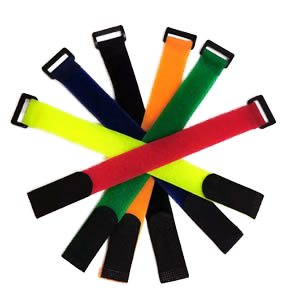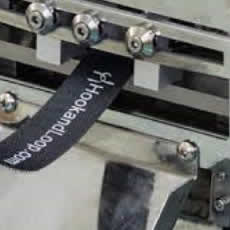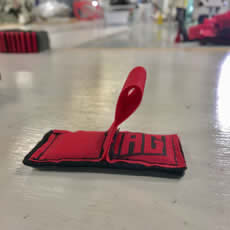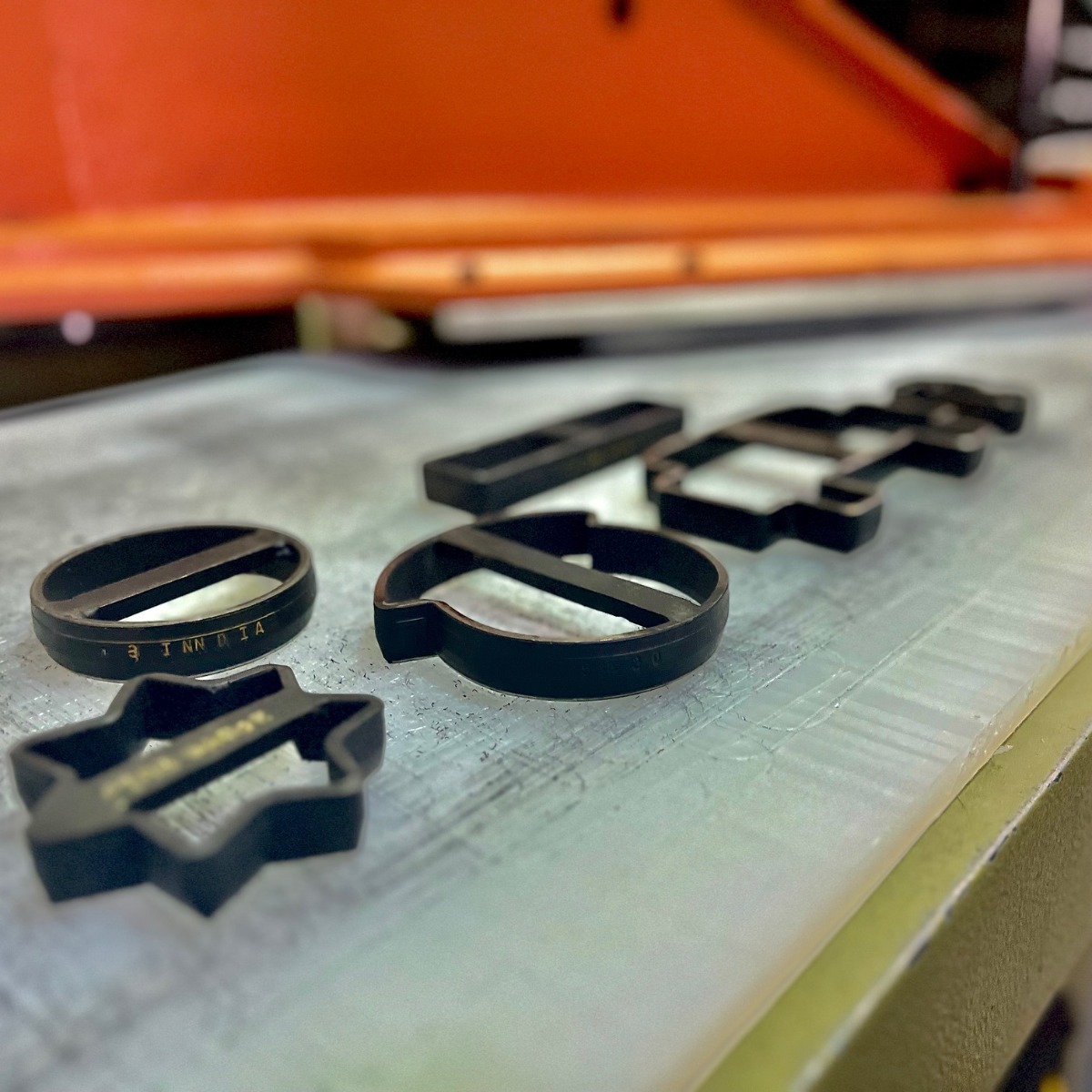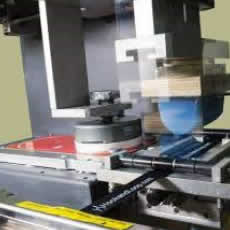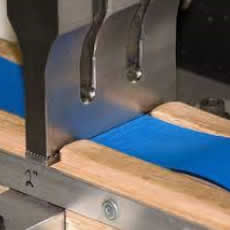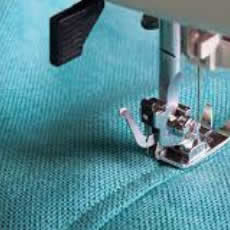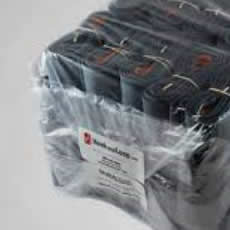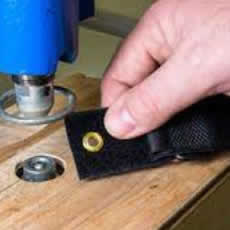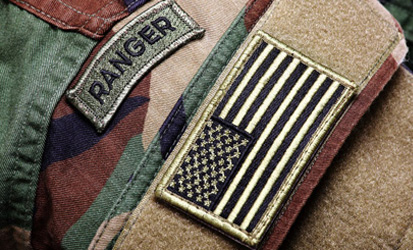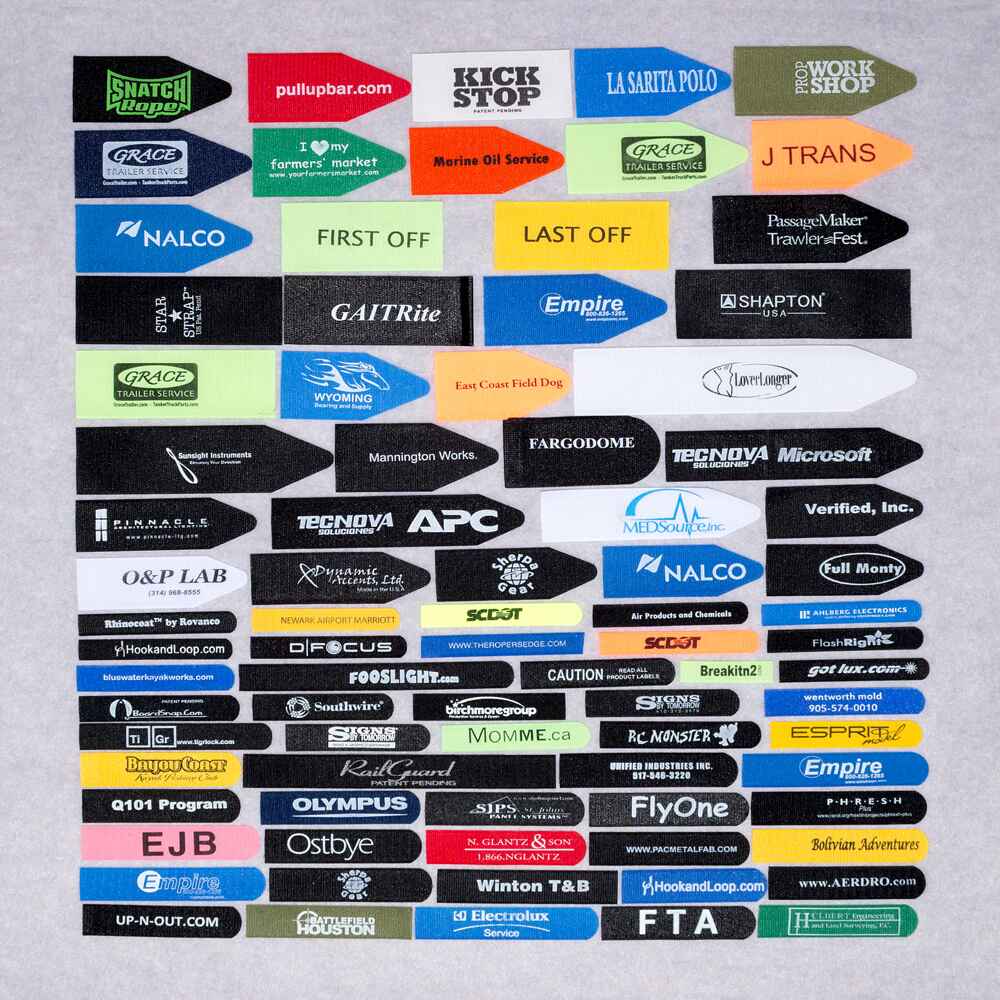We offer two types of adhesive backing for all of our peel and stick hook and loop products. There's a rubber based adhesive and an acrylic based adhesive. These are pressure sensitive adhesives, or PSAs, meaning that you simply have to apply pressure to the adhesive to stick it to the substrate (the material the adhesive is being stuck to). Each adhesive has it's own pros and cons but much of the adhesive's efficacy comes from ensuring a proper bond to the substrate. So we'll cover some various questions we often have to run through when recommending adhesives to our customers.
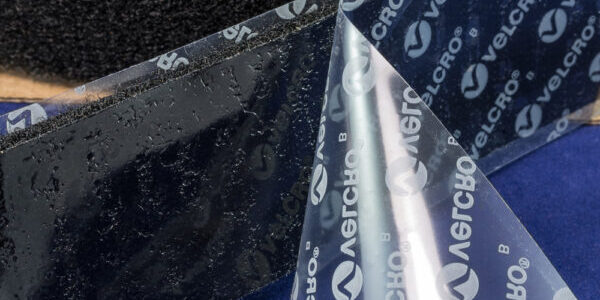
What Are You Sticking It To?
Both the acrylic and rubber adhesives bond well to a variety of substrates including metal, glass, stainless steel, and aluminum. Both adhesives bond well to most plastics but the rubber is better suited for Low Surface Energy (LSE) plastics. This is because the rubber adhesive is a high tack adhesive, meaning it's stickier. The acrylic adhesive is a medium tack adhesive. So in instances where you are unsure of the type of plastic you'll be sticking the adhesive to, a rubber adhesive should bond to the substrate best.
The rubber adhesive also sticks better to rough surfaces like wood, vinyl, and canvas. There are a lot of varieties of each of these substrates, so the rubber adhesive may bond better to some than others. In short, the rubber adhesive will bond better to these substrates than the acrylic adhesive.
These PSAs are not designed to stick well to fabrics and clothing. We have some customers who use them in this way, but it is to make stitching them in place an easier task, not to form a permanent or semi-permanent bond to the fabric. For fabrics, it's best to find a product with an adhesive specifically for that purpose or to attach the hook and loop by some other means like sewing or applying a contact cement or some other adhesive manually.
Temperature Range
Besides the substrate and tackiness, there are other factors to consider. The biggest one is operating temperature range. The operating temperature range for each adhesive can vary based on manufacturer, so we'll provide the operating temperature range for our DuraGrip Brand for this example. The rubber adhesive has an operating temperature range of -40F to 190F. Other rubber adhesives may only be good up to 120F, which is not ideal for certain climates or applications. The acrylic adhesive has an operating temperature range of -40F to 240F.
What this means is that if you are in a very hot and arid climate, the acrylic adhesive will give you the better performance of the two if you foresee temperatures approaching 200F. One good example of such an application is in automotive industries where the interior of cars can get well into the high 100s.
Moisture Or Chemical Resistance
The acrylic adhesive has the added benefit of holding up better to moisture and chemicals as opposed to the rubber adhesive. So if the hook and loop you plan to use is going to be in a humid environment, may get caught in the rain frequently or may end up in a shop or plant where chemical exposure may occur, the acrylic adhesive would hold up better in those conditions.
This is why we generally refer to the rubber as an indoor adhesive and acrylic as an outdoor adhesive. Rubber is ideal for climate controlled environments where extreme temperatures, moisture and chemical exposure are unlikely to play a factor in its performance. Acrylic adhesives are better suited for extreme temperatures and the occasional rainy day.
How to Attach Velcro to Fabric?
Velcro can be attached to fabric by sewing, using fabric adhesive, iron-on backing, adhesive Velcro, or even hot glue depending on your project. Sewing offers the most secure bond, while adhesives work well for light-duty or temporary fabric applications.
Easiest Ways for Attaching Velcro to Fabric
-
Sewing – The most secure and long-lasting method, suitable for any fabric.
-
Fabric glue – Good for no-sew applications; works best on non-stretchy materials.
-
Iron-on Velcro – Uses heat to bond Velcro to fabric, great for patches or crafts.
-
Adhesive-backed Velcro – Easy to use, but best for light or temporary use.
-
Hot glue – A quick fix for craft projects; not ideal for frequent washing.
-
Double-sided tape – Temporary solqqution for lightweight or decorative use.
The Bottom Line
So when considering which adhesive to use, first consider what substrate the adhesive is going to be applied to. If the adhesive doesn't bond well to the substrate, it won't matter if it gets rained on or what the temperature is. It won't stick.
Next, consider what secondary factors may be at play. Is it extremely hot or cold where you live? Is it very humid?
Lastly, just because a PSA doesn't sound like a good solution doesn't mean you can't use hook and loop! You can fasten the hook and loop a variety of other ways like with a contact cement or aerosol adhesive, or with staples, rivets, screws or nails.
One final note: We encourage providing samples for your testing whenever you may be unsure of which adhesive to go with! All you have to do is call us at (800) 940-6934 or email us at info@hookandloop.com to request a free sample.
Additional FAQs:
Q. What is the best fabric glue for Velcro®?
A. Fabric glue is not the best option for securing Velcro® to fabric long-term, as these adhesives do not bond well to fabric. Instead, the best methods for attaching Velcro® to fabric include:
-
Sewing: Provides a strong and durable attachment.
-
Contact Cement or Spray Adhesives: Offer better adhesion than fabric glue.
- Specialized Fabric Adhesives: While some fabric glues may help with initial placement, they are not ideal for long-term bonding.
Q. What kind of glue to use on Velcro®?
A. The right adhesive for Velcro® depends on the surface material and environmental conditions:
-
For Fabric: Sewing or contact cement is recommended instead of adhesive-backed Velcro®.
-
For Hard Surfaces (Plastic, Metal, etc.): Use rubber-based adhesives for rough surfaces like wood, vinyl, and canvas or acrylic-based adhesives for smooth, non-porous surfaces such as metal, glass, or plastics.
- For Outdoor Use: Acrylic adhesives are more resistant to moisture, heat, and chemicals, making them ideal for extreme temperatures and humid conditions.
Q. Can fabric glue hold Velcro® on metal surfaces?
A. No, fabric glue is not suitable for metal surfaces because it lacks the necessary strength and adhesion. Instead, use:
-
Acrylic-based adhesives: Provide better durability and resistance to environmental factors.
-
Contact Cement or Epoxy Adhesives: Work well for long-term bonding.
- Mechanical Fasteners: Screws, rivets, or staples can also be used for a permanent attachment.
Q. How do you get Velcro to stick to fabric?
A. Use sewing, fabric glue, iron-on Velcro, or adhesive-backed Velcro, depending on how permanent or strong you need the attachment to be.


